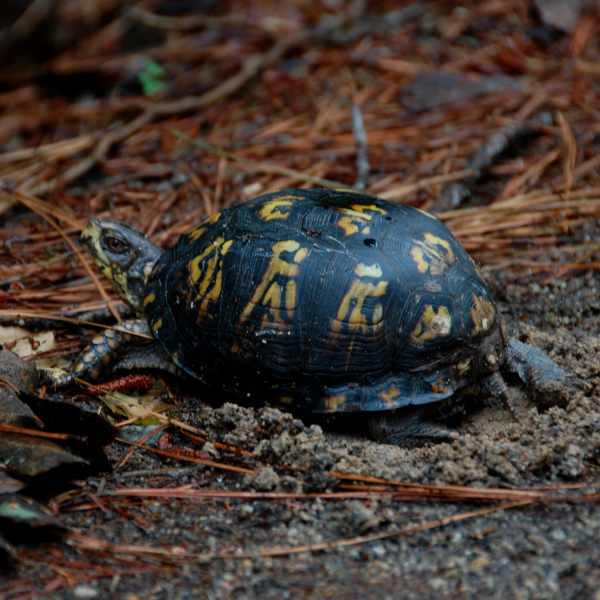
Have you seen any box turtles (Terrapene carolina) this summer? I’ve seen three box turtles just in the last week, so I decided it would be a good time to learn a little bit more about them.
Box turtles move very slowly. Their territory is usually under two acres and they have a very strong instinct to return to their home. That is why it is very important to not move a box turtle very far if you find one on the side of the road. Just move it safely across the road in the direction it was moving, and leave it alone.
The underside of the turtle’s shell is called a plastron. Box turtles have a hinged plastron that allows them hide their head and legs and seal them off completely from dangerous predators. Adult turtles have the ability to repair, and even regenerate their shell!
The pattern of orange marks on the shell and head is unique to every turtle. Male turtles are said to have red eyes, while females have brown eyes.
The lifespan of a box turtle can be one hundred years or more. They live in a variety of habitats, from ponds to fields to woodlands. They eat both plants and animals- flowers, seeds, roots, berries, mushrooms, insects, fish, and amphibians. One of their defense mechanisms is to eat poisonous mushrooms. The mushroom makes the turtle flesh poisonous, which in turn would make the predators ill or die if they decided to eat that turtle.
It is common to see turtles by the road in the summer because that is when the pregnant females move to find a nesting site. The turtle in the picture above looks like it has brown eyes. So maybe this was a pregnant female.
I hope you learned something about box turtles today! I got most of this information from the National Park Service website. Take a look there if you’d like to learn more.
Let me know if you see any box turtles on the trails!